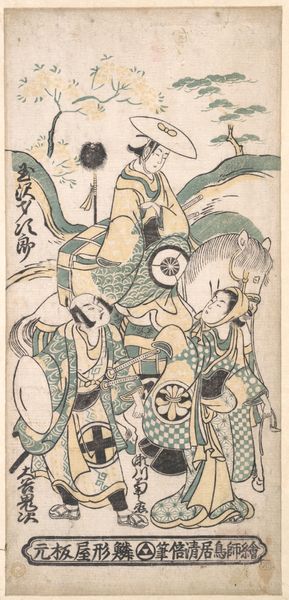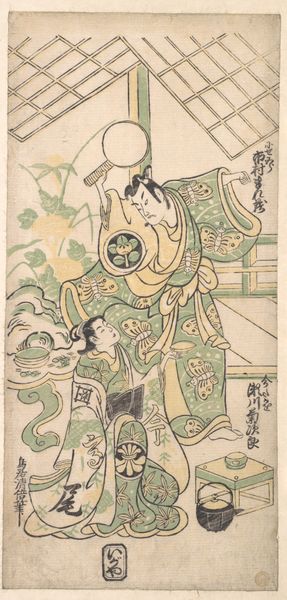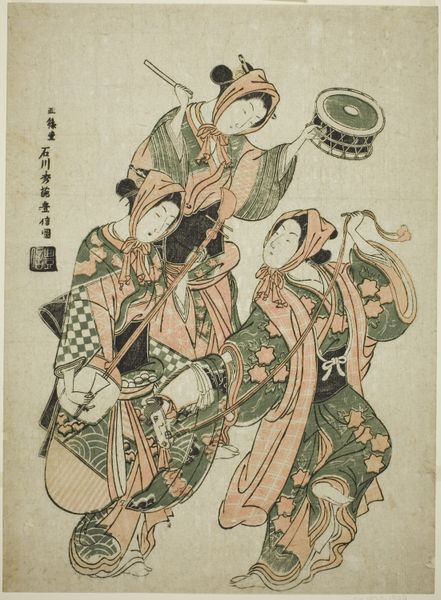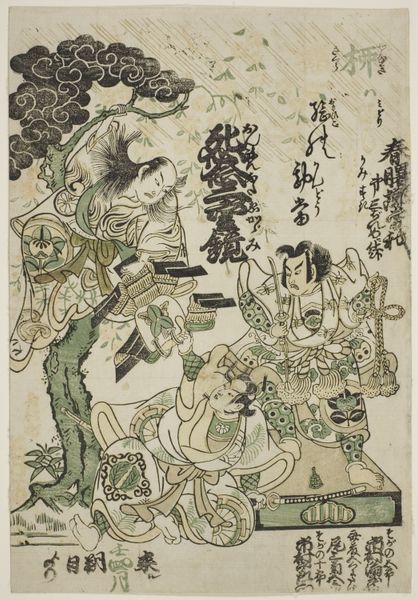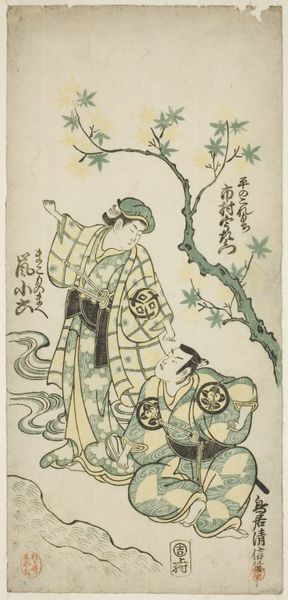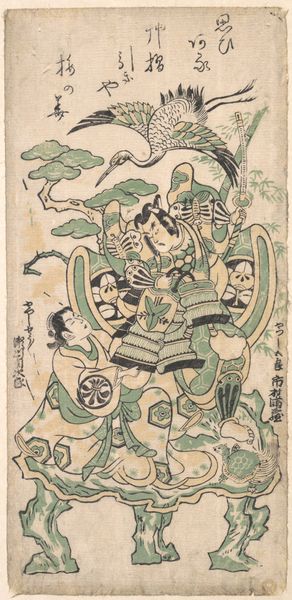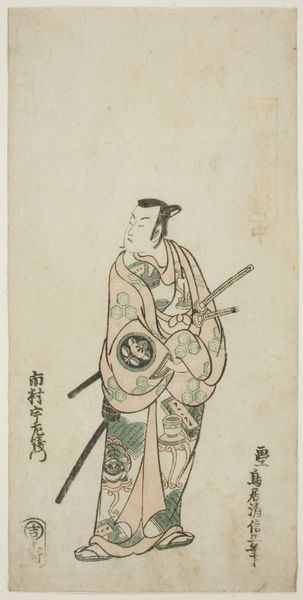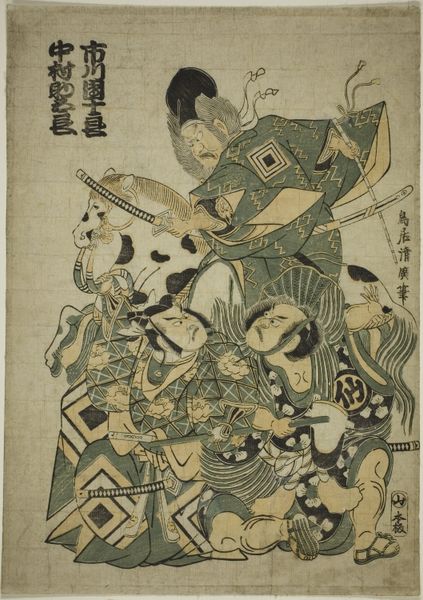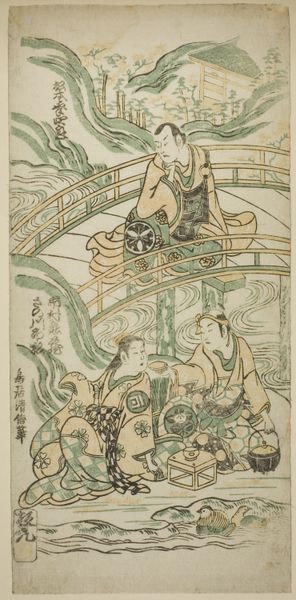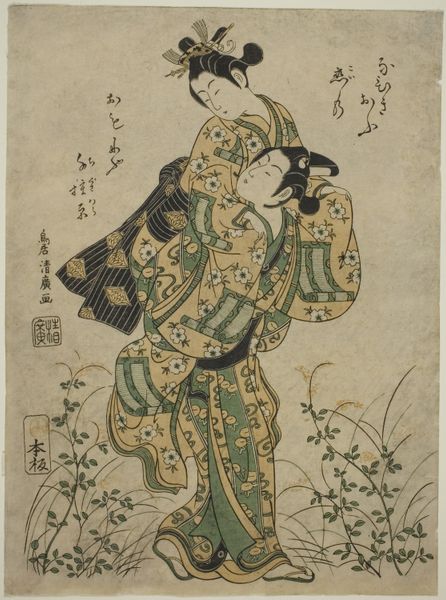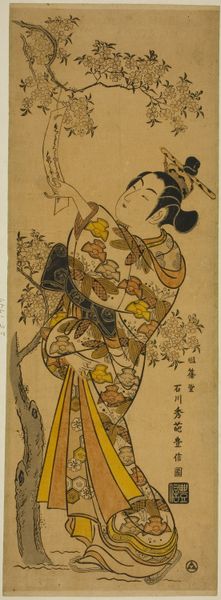
The Actors Tamazawa Saijiro I as Ushiwakamaru, Segawa Kikunojo I as Oroku, and Otani Oniji I as Matano Goro in the play "Sazareishi Suehiro Genji," performed at the Nakamura Theater in the first month, 1744 1744
0:00
0:00
print, woodblock-print
#
ink drawing
#
narrative-art
# print
#
asian-art
#
ukiyo-e
#
japan
#
figuration
#
woodblock-print
Dimensions: 31.8 × 15.0 cm (12 1/2 × 5 7/8 in.)
Copyright: Public Domain
This is a woodblock print by Torii Kiyomasu II made in Japan in 1744. The image depicts three actors from the Kabuki theatre, and gives us a glimpse into the cultural world of Edo-period Japan. Kabuki was a hugely popular, but also controversial form of entertainment at this time. Founded by a woman, Okuni, Kabuki theatre troupes were initially all-female. However, their performances often involved suggestive themes, leading the Tokugawa shogunate to ban women from performing in 1629, when they believed that the performances were a threat to public morals. Kabuki continued as an art form performed by men, including young boys, who often played female roles. These gendered roles were vital to the performance. In this print the actor Segawa Kikunojo I is playing the female role of Oroku. The art of Kabuki had to negotiate constant censorship from the authorities. Understanding the social conditions that shaped Kabuki theatre helps us better understand prints like these. Social histories of art help us to understand the public role that art played at any given time.
Comments
No comments
Be the first to comment and join the conversation on the ultimate creative platform.
